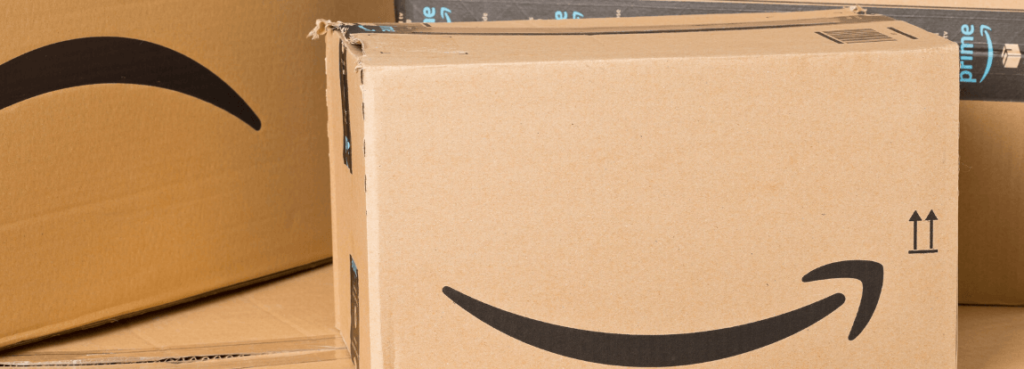If consumers can’t tell the difference between your brand and your competitors, you’re in trouble. They’ll choose whichever product has the lowest price, because they don’t have any reason to favor your brand over another. Your product is simply a commodity. And that’s a problem. Sometimes this happens because there’s nothing remarkable about the products in your space. They all look and function the same. But it can also happen when your brand used to have unique qualities that everyone else imitated. When your brand’s unique benefits and values become commonplace, your brand has become a commodity. At PriceSpider, we…
Tag: Marketing
Top of Mind Awareness: How Brands Get it and Keep It
When consumers think about your product category, what’s the first brand that comes to mind? Whatever it is, that brand has achieved top of mind awareness. If you’re the first brand people think of, it essentially means you have the highest level of brand awareness in your industry. Obviously, every consumer has their own experiences and preferences that influence which brand is “top of mind” for them. So top of mind awareness generally refers to which brand the largest percentage of consumers think of first in a category. Market researchers use this percentage to gauge the most popular brands in…
8 Tips for Using Social Media to Increase Sales
Social media is a valuable tool for growing an audience around your brand, communicating important information to the public, and responding to customers. And with traffic flocking to brand websites at record levels, now more than ever it’s important to ensure your digital touchpoints, advertising and social media, especially Instagram are optimized for sales conversion. A lot of brands have managed to turn social media into a lucrative channel for driving ecommerce sales, too. But it’s not as simple as throwing up an ad for your product or churning out posts about them every day. If you want to use…
How the Landscape of Ecommerce Is Changing
If you’re an ecommerce brand selling through retailers right now, you’ve probably noticed something: Amazon sales are down. And sales through Walmart and Target are up. For years, Amazon has been the marketplace where brands could expect to see the highest volume of sales. Bar none. Their supply chain was stronger. Their incentives were better. But as ecommerce sales reacted to stay-at-home orders and social distancing guidelines, Amazon chose to prioritize essential goods like “household staples and medical supplies,” which meant they stopped accepting other items in their warehouses until April 5. As nonessential items went out of stock, orders…
What to Do When Your Ecommerce Traffic or Sales are Through the Roof
A lot of brands are seeing a massive increase in website traffic and ecommerce sales in the wake of COVID-19. In fact, comparing sales from March 3, 2020 to April 12, 2020 to last year’s sales, our total platform saw an increase of 99 percent in transactions (including categories that were trending down). And while transactions are starting to level off this week, the Food and Beverage category alone, saw an increase in sales of 264 percent during this time compared to 2019 as states issued stay-at-home orders and public health recommendations evolved. Some brands have been thriving in ecommerce…
The Renaissance of Brand.com – Direct Traffic Increases 76% During COVID-19 Pandemic
Ecommerce Beginnings In the early beginnings of the internet, it was a simpler time. Hotmail was the preferred email domain, social media was a chatroom, and a little startup called Amazon apparently had a dream of selling books on the internet with the promise of free shipping. For most, Amazon was quickly overlooked as a crazy pipedream and few imagined how it would shape ecommerce into what it is today. Back then, the role of the brand website was really about engagement, entertainment, and experience. Everything from sweepstakes and games and endings to suspenseful superbowl commercials were hosted there. Big…
How to Talk About COVID-19 as a Brand
The effects of the COVID-19 pandemic are everywhere you look. Every building you enter has signs on the door. It’s all over the news and social media. And many businesses have had to close or make significant changes to continue operating. So if you haven’t already sent emails or posted about it on your blog or social media, you’re probably wondering: how should your brand talk to its customers about COVID-19? Before we answer that, there’s another question you should ask first. Should you even do it? When everyone is talking about the same thing, it’s easy for brands to…
Brand Equity in the Digital Age: How to Fight for Your Brand Online
When consumers think of your brand, what kind of experience, quality, and value do they associate with your name? When your store or website is the only point of sale, you have a lot of control over your customers’ experiences. But when you work with retailers, that’s not always the case. Every retailer you work with directly impacts your brand equity–for better or for worse. In this episode of PriceSpider Ecommerce Connected, PriceSpider’s host, Anthony Capozzolli sits down with Bill Johannesen, founder of Vision Werks and one of the chief architects of Bose’s well-known Unilateral Minimum Resale Price Policy to…
Customer-Centric Strategy: What it Means and How to Make One
“The customer is always right.” Most businesses apply this mantra to customer complaints—but what if it was core to your business? What if you shaped every aspect of your organization around what’s best for your customer? It might surprise you to learn that a customer-centric strategy can increase sales, reduce churn rates, and raise your customer lifetime value (CLV). In their interactions with customers, most businesses focus on the ideal outcome for themselves. Every touchpoint is driving people to the sale. (“Always Be Closing,” right?) But what if doing what’s best for your organization actually means doing what’s best for…
5 Ways Your Website Might Be Misleading Potential Customers
You would never intentionally mislead your potential customers. But a lot of brands do it without even realizing it. Their websites don’t give visitors the whole picture. Or they give visitors misleading—or outdated—information. They’re not doing it on purpose. They just don’t have the right tools—or they’re not using those tools to their full potential. Here are five ways your website might be misleading potential customers right now, plus what you can do about it. 1. Hiding major retailers Direct-to-consumer sales give you the best margins. So it’s no wonder many brands choose not to highlight retail partners on their…









